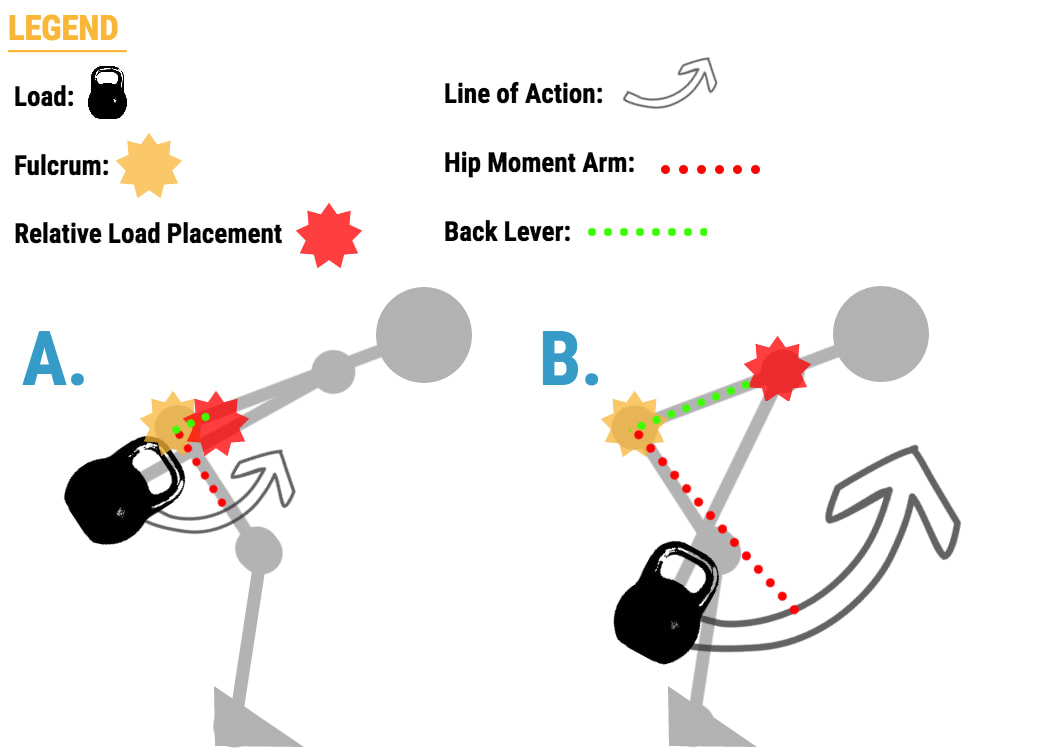|
Video Key Points:
What is connection? Connection means connecting the arm holding the kettlebell to your body (i.e. the hips) in order to conduct the force of your hip drive into the bell. This is the foundation upon which kettlebell swinging works. You cannot create a ballistic swing if you don't have connection, because you cannot launch the bell (i.e. arm) off a surface it was never connected to. Connection means more power, but it also means lifting safer because it shortens what is referred to in the study of biomechanics as the moment arm. A moment arm is the length between a joint axis or fulcrum and the line of force acting on that joint. This is my interpretation of the line of action in a kettlebell swing. I'm not a physics wizard so if anyone else is well studied on lines of action and moment arms feel free to add your take if you feel like there is a significant discrepancy with what actually happens during the swing.
Basically, the longer the line of red dots (moment arm), the more stress the back lever undergoes. Not connecting to the hips also displaces the relative load higher up the spine to the scapula (anchor) increasing the risk of back injury. So example (A) exhibits less risk and less stress, whereas example (B) exhibits more risk and more stress. It cannot be stressed enough how fundamentally crucial this concept is. If you don't get this concept then you should not be lifting. It's fine if you're working on it, and really it's something you should ALWAYS be working on. But not adhering to this principle makes you a back lifter, and a back lifter is not a safe lifter. Play safe! Coach Solly
1 Comment
BK
11/16/2019 05:57:44 pm
Coach Solly, I truly appreciate your page, your post, and these notes and diagram. I spent 6 months years back with a StrongFirst Certified Instructor and never heard of this connection. It truly makes sense. I will definitely be using it from now on. I thought I noticed y'all doing this with your snatches. It just never came to me to use it on my swing. Never have done much of the snatches because of my shoulder. I am also looking forward to using your shoulder Clubbell complex real soon as well.
Reply
Your comment will be posted after it is approved.
Leave a Reply. |
NANAIMO'S BEST kettlebell group, strength & fitness classes | (250) 713-1262
CategOries
All
Archives
February 2024
|
Get Social! |
Closer Than You Think!11 Giggleswick Pl
Nanaimo, BC V9S 2V7 |


 RSS Feed
RSS Feed
